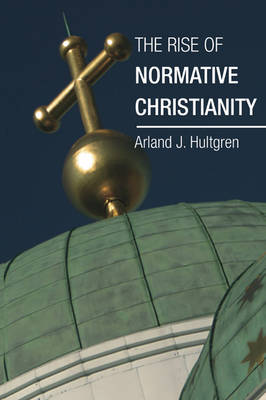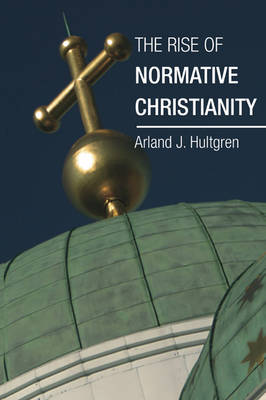
- Afhalen na 1 uur in een winkel met voorraad
- Gratis thuislevering in België vanaf € 30
- Ruim aanbod met 7 miljoen producten
- Afhalen na 1 uur in een winkel met voorraad
- Gratis thuislevering in België vanaf € 30
- Ruim aanbod met 7 miljoen producten
Zoeken
Omschrijving
More than fifty years ago, Walter Bauer's 'Orthodoxy and Heresy in Earliest Christianity' undercut the traditional views on the making of orthodox Christianity by arguing that in several geographic areas, heresy preceded orthodoxy. Subsequently, the ancient documents discovered at Nag Hammadi proved that early Christianity was tremendously diverse. These influences have given rise to the notion that the various gnostic interpretations are mere alternatives to more traditional interpretations of Jesus and his significance. Using a focused but broad definition of normative Christianity, Hultgren contends that such a tradition originated at the very beginnings of the Christian movements, developed, and came to dominate as the most adequate expression of Jesus' legacy. Normative Christianity - a stream as wide as the New Testament canon - forged a coherence between confession of faith and community ethos that could endure and was the basis for later orthodoxy.
Specificaties
Betrokkenen
- Auteur(s):
- Uitgeverij:
Inhoud
- Aantal bladzijden:
- 224
- Taal:
- Engels
Eigenschappen
- Productcode (EAN):
- 9781592447381
- Verschijningsdatum:
- 5/07/2004
- Uitvoering:
- Paperback
- Formaat:
- Trade paperback (VS)
- Afmetingen:
- 141 mm x 217 mm
- Gewicht:
- 281 g

Alleen bij Standaard Boekhandel
+ 91 punten op je klantenkaart van Standaard Boekhandel
Beoordelingen
We publiceren alleen reviews die voldoen aan de voorwaarden voor reviews. Bekijk onze voorwaarden voor reviews.











